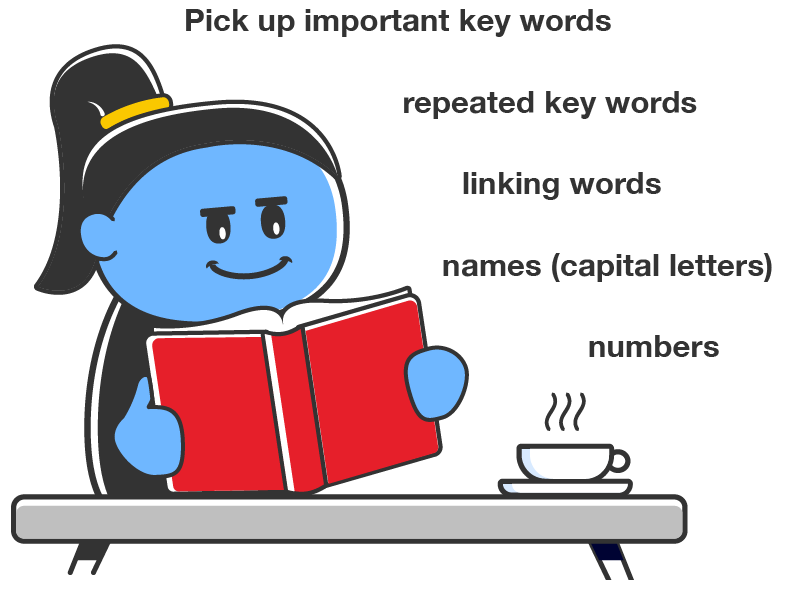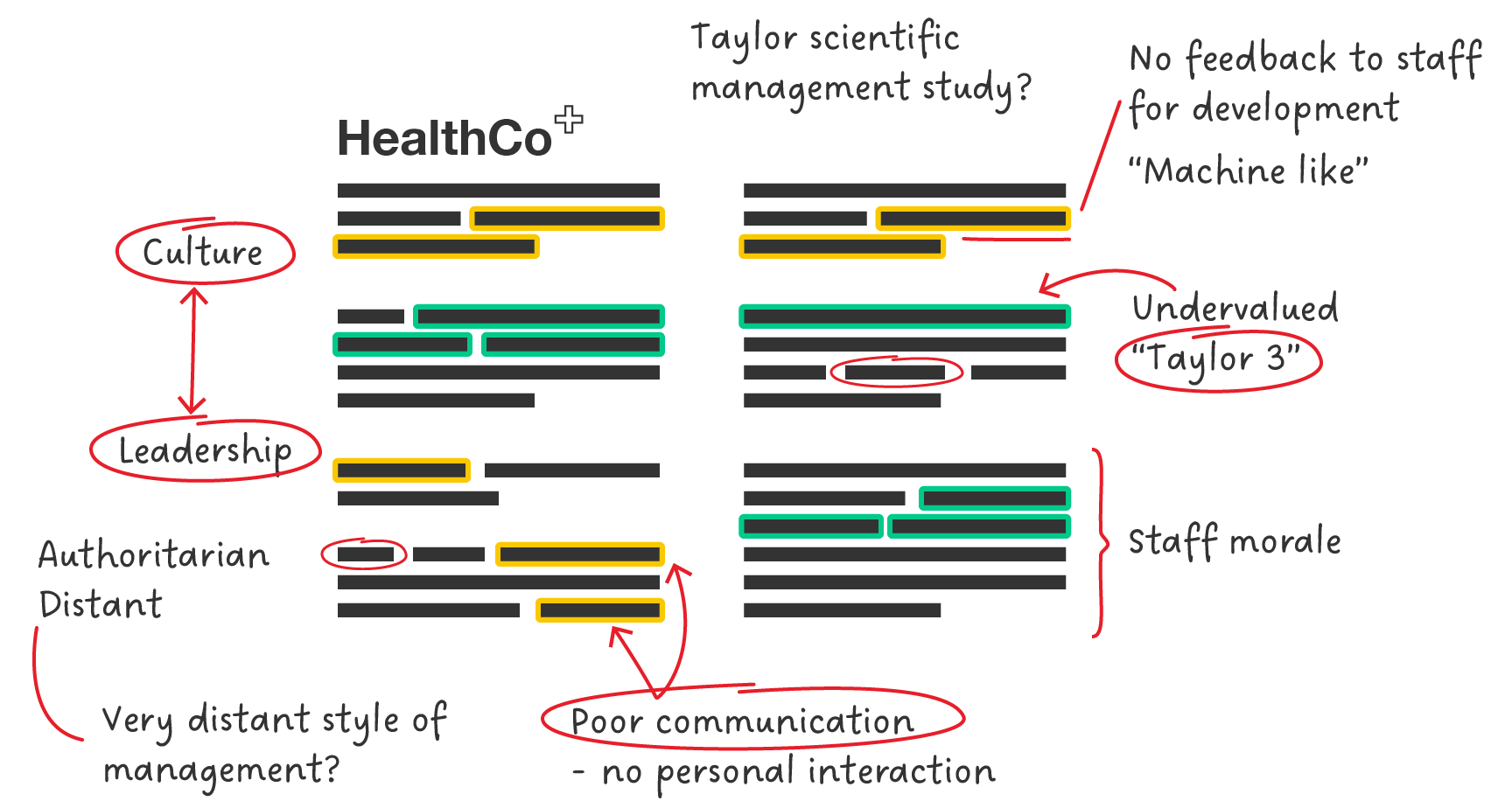Reading skills
To help with detailed reading, you might like to review your reading skills. Check out this resource to learn how to read more efficiently and effectively.
The next step is to read the case to identify what the issues are and try to understand how, or why, they might have occurred. Let's find out how we can do this.
A proper analysis requires thorough reading more than once.
The three reading strategies to use are:

Do not stop to make notes. The purpose is to understand the larger concepts, overall structure and scan for keywords, names and dates. When you have finished, ask yourself the following questions:
Re-read the case again, more slowly and carefully, for a deeper understanding. Some questions you could ask are:
Now, begin to annotate the case and continue to ask yourself questions as you read.
Highlight, underline and circle text, and add names, labels and comments to:

Reading skills
To help with detailed reading, you might like to review your reading skills. Check out this resource to learn how to read more efficiently and effectively.
Note-taking
To help with annotating the case, you might like to review your note-taking skills. Check out this resource to learn how to take better notes.